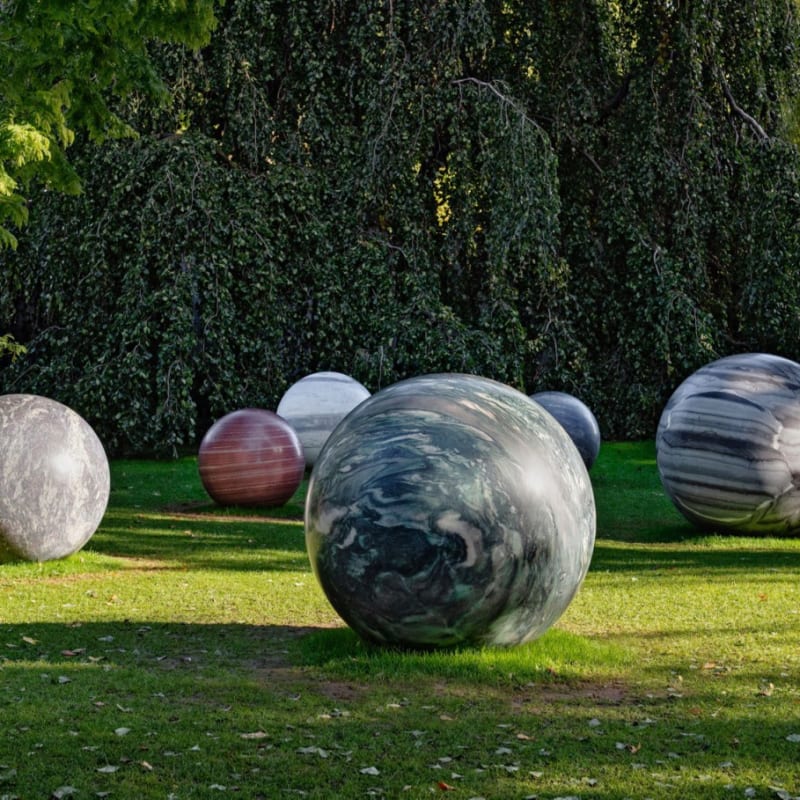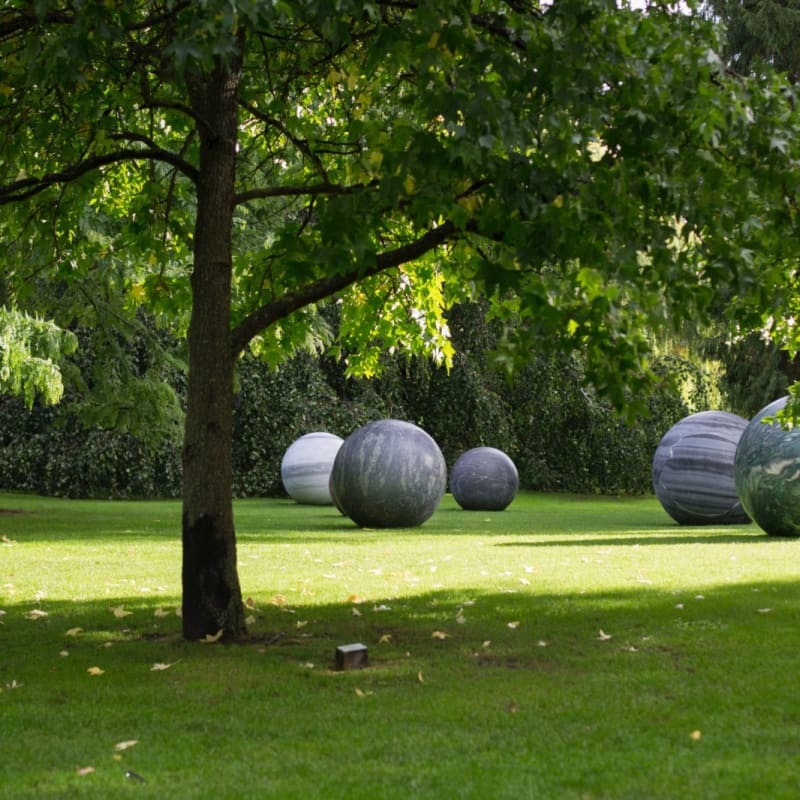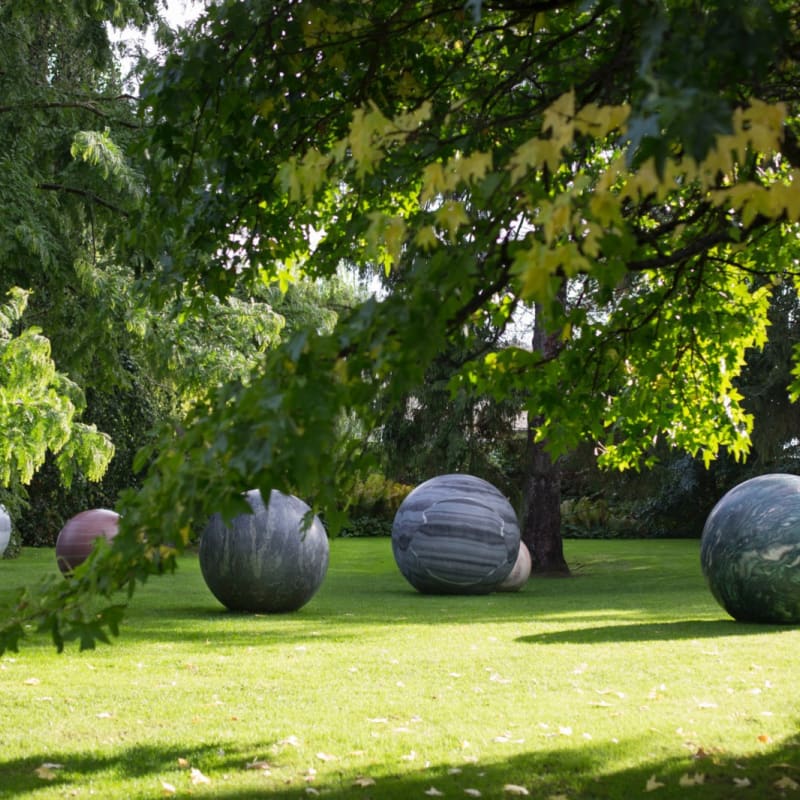Kwade considers gravity the ultimate power, the force that allows us to be here, and which is also essential when it comes to working with sculpture: “Weight, proportion, stability and balance. You can’t escape it.” When making her sculptures, she tries to “visually trick it out,” working on the very border of what gravity allows before the sculpture collapses. Since the beginning, the circling system has been repeated in Kwade’s work as it embodies the metres she tries to understand – time, space and gravity: “Automatically that brings you to a circulation.” The stone spheres also represent different dimensions and possibilities, and what Kwade considers “the random point of our existence.” Daily problems, she argues, fade when you think about the fact that we are living on a rotating rock somewhere in the universe: “Right now we are sitting on a spinning sphere somewhere in the universe, which is rotating with 3,600 kilometres per hour. It’s so absurd, so all the rest is kind of funny.” In continuation of this, Kwade explains that she is trying to answer the same impossible questions as science and philosophy: “We are really poor animals – we are able to ask, but we’re too stupid to get the answer.”





